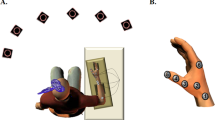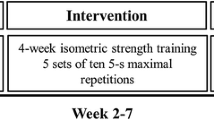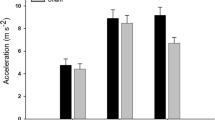Abstract
We used focal transcranial magnetic stimulation to examine the effects of 120 synchronized thumb and foot movements on the motor output map of the right abductor pollicis brevis muscle (APB) (experiment 1). To evaluate the performance, the latencies between the onset of the electromyographic activity (EMG) of the two muscles were measured. As control, 120 asynchronous thumb and foot movements were performed (experiment 2). Exclusively in experiment 1, the center of gravity (CoG) of the output map moved medially in the direction of the foot representation area (mean 7 mm, P<0.05) and returned into its original location within 1 h. In experiment 2, the CoG remained unchanged (mean displacement, 0.68 mm into a lateral direction; not significant). The effect in experiment 1 was independent of an improvement in performance. We conclude that a short-lasting training of synchronous movements induces modulations of motor output maps which probably occur due to interactions between hand and foot representation areas in the motor cortex.
Similar content being viewed by others
Author information
Authors and Affiliations
Additional information
Received: 12 January 1998 / Accepted: 16 October 1998
Rights and permissions
About this article
Cite this article
Liepert, J., Terborg, C. & Weiller, C. Motor plasticity induced by synchronized thumb and foot movements. Exp Brain Res 125, 435–439 (1999). https://doi.org/10.1007/s002210050700
Issue Date:
DOI: https://doi.org/10.1007/s002210050700




